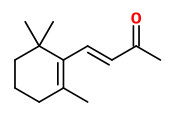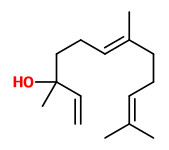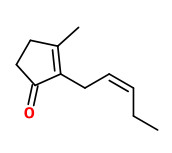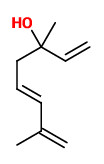Camellia sinensis (L.) O.Kuntze - syn.Thea sinensis L. - Theaceae - tea, Teestrauch
Evergreen shrub (3-4m) or small tree (to 10m), in culture 1.5-2m, native to South China and India, cultivated in Southeast Asia, East Africa, South America; leaves alternate, dark green, elliptic-cuneate, leathery, serrulate; flowers fragrant, wheel-shaped, white or pink, solitary or little groups forming.
„Two major varieties are grown: Camellia sinensis var. sinensis for Chinese teas, and Camellia sinensis var. assamica for Indian Assam teas. White tea, yellow tea, green tea, oolong, pu-erh tea and black tea are all harvested from one or the other, but are processed differently to attain varying levels of oxidation.“
http://en.wikipedia.org/wiki/Camellia_sinensis
Camellia sinensis var.assamica = Camellia assamica (Mast.) Hung T.Chang; Camellia theifera Griff. - Assam tea
Camellia sinensis var.sinensis = Camellia thea Link; Thea sinensis L. (var. parvifolia Miq.) - Chinese tea
http://www.ars-grin.gov/cgi-bin/npgs/html/taxon.pl?8732
„Aroma extract dilution analysis (AEDA) of the volatile fractions of green and black tea samples revealed 28 odourants of which 27 were identified. As the odour quality and the chromatographic properties of most of the odourants occurring in the air above the tea powders agreed with those which were identified by the preceding AEDA, these compounds were detectable by gas chromatography–olfactometry (GC–O) in static headspace samples. (Z)-Hex-3-enal, linalool, (Z)-octa-1,5-dien-3-one, oct-1-en-3-one, (Z)-hept-4-enal, butane-2,3-dione, 2-methylpropanal, 3-methylbutanal, 3-methylnonane-2,4-dione, (E)-non-2-enal, octanal, (E,Z)-nona-2,6-dienal and hexanal were found in the headspace volume of 40 ml which was drawn at 40°C from both kinds of tea. (E,E)-Nona-2,4-dienal and α-pinene were detected as additional odourants of black tea. The most potent odourants occurring in the air above the tea powders were evaluated by the analysis of decreasing headspace volumes, e.g. (Z)-hex-3-enal was the sole odourant in 2 ml of the headspace of green tea and linalool in 0.5 ml of that of black tea. This procedure indicated that the difference in the odours of green and black tea was mainly due to a higher concentration of (Z)-hex-3-enal, (Z)-octa-1,5-dien-3-one and butane-2,3-dione and the much lower concentration of linalool in the air above the former.“
[Identification of potent odourants in static headspace samples of green and black tea powders on the basis of aroma extract dilution analysis (AEDA)., H. Guth, W. Grosch, Flavour and Fragrance Journal, Vol.8, 1993, 4]
Of the 36 odor-active (shown by AEDA) compounds of a Japanese green tea (Sen-cha), 4-methoxy-2-methyl-2-butanethiol (meaty), (Z)-1,5-octadien-3-one (metallic), 4-mercapto-4-methyl-2-pentanone (meaty), (E,E)-2,4-decadienal (fatty), β-damascone (honey-like), β-damascenone (honey-like), (Z)-methyl jasmonate (floral), and indole (animal-like) showed the highest FD factors (the most important components of the Japanese green tea odor). Newly identified compounds in green tea were 4-methoxy-2-methyl-2-butanethiol, 4-mercapto-4-methyl-2-pentanone, methional, 2-ethyl-3,5-dimethylpyrazine, (Z)-4-decenal, β-damascone, maltol, 5-octanolide, 2-methoxy-4-vinylphenol, and 2-aminoacetophenone.
[Kumazawa, Kenji, and Hideki Masuda. „Identification of potent odorants in Japanese green tea (Sen-cha).“ Journal of agricultural and food chemistry 47.12 (1999): 5169-5172]
„Two kinds of pan-fired green teas (Japanese Kamairi-cha and Chinese Longing tea) were compared with the common Japanese green tea (Sen-cha). Application of the aroma extract dilution analysis (AEDA) using the volatile fraction of the Sen-cha, Kamairi-cha and Longing tea infusions revealed 32, 51, and 52 odor-active peaks with flavor dilution factors between 16 and 1024, respectively. (Z)-1,5-Octadien-3-one (metallic, geranium-like), 4-mercapto-4-methyl-2-pentanone (meaty, black currant-like), methional (potato-like), (E,Z)-2,6-nonadienal (cucumber-like), and 3-methylnonane-2,4-dione (green, fruity, hay-like) showed high flavor dilution factors in all varieties. In addition, 2-acetyl-1-pyrroline (popcorn-like), 2-ethyl-3,5-dimethylpyrazine (nutty), 2,3-diethyl-5-methylpyrazine (nutty), and 2-acetyl-2-thiazoline (popcorn-like) belonged to the most potent odorants only in the pan-fired green teas.“
[Identification of potent odorants in different green tea varieties using flavor dilution technique., Kumazawa, K., Masuda, H., Journal of agricultural and food chemistry, 50(20), 2002, 5660-5663]
„By application of the aroma extract dilution analysis on the volatile fraction isolated from a black tea infusion (Darjeeling Gold Selection), vanillin (vanilla-like), 4-hydroxy-2,5-dimethyl-3(2H)-furanone (caramel), 2-phenylethanol (flowery), and (E,E,Z)-2,4,6-nonatrienal (oat-flake-like) were identified with the highest flavor dilution (FD) factors among the 24 odor-active compounds detected in the FD factor range of 4−128. Quantitative measurements performed by means of stable isotope dilution assays and a calculation of odor activity values (OAVs; ratio of concentration to odor threshold in water) revealed, in particular, the previously unknown tea constituent (E,E,Z)-2,4,6-nonatrienal as a key odorant in the infusion and confirmed the important role of linalool and geraniol for the tea aroma. An aroma recombinate performed by the 18 odorants for which OAVs > 1 were determined in their “natural” concentrations matched the overall aroma of the tea beverage. In the black tea leaves, a total of 42 odorants were identified, most of which were identical with those in the beverage prepared thereof. However, quantitative measurements indicated that, in particular, geraniol, but also eight further odorants were significantly increased in the infusion as compared to their concentration in the leaves.“
[Characterization of the key aroma compounds in the beverage prepared from Darjeeling black tea: quantitative differences between tea leaves and infusion., Schuh, C., Schieberle, P., Journal of agricultural and food chemistry, 54(3), 2006, 916-924]
„The volatile constituents of two exquisite green tea varieties, Kiyosawa tea from Japan and Long Jing tea from China, were investigated in order to identify new compounds responsible for the characteristic flavor of a green tea brew. The extracts were prepared by solid-phase extraction using Oasis-HLB-cartridges. Besides the common compounds of green tea chemistry, the already described compounds 3-methyl-2,4-nonanedione (1) and 3-hydroxy-3-methyl-2,4-nonanedione (2), products of degradation of furan fatty acids, as well as three new compounds related to compound 1 were identified. These were 1-methyl-2-oxopropyl hexanoate (3), 1-methyl-2-oxoheptyl acetate (4) and 2-butyl-4,5-dimethyl-3(2H)-furanone (5). Their syntheses and spectroscopic data are reported. Compound 2 increases the sweet, creamy aroma and the characteristic mouthfeel of a green tea flavor, compounds 3 and 4 contribute to its floral, juicy notes and compound 5 exhibits an interesting sweet, buttery flavor.“
[New constituents related to 3-methyl-2,4-nonanedione identified in green tea., Naef, R., Jaquier, A., Velluz, A., Maurer, B., Journal of agricultural and food chemistry, 54(24), 2006, 9201-9205]
Potent odorants of black tea are aldehydes like 2-methylpropanal, 3-methylbutanal, 2-methylbutanal, hexanal, (E)-2-hexenal, (z)-4-heptenal, (E)-2-nonenal, (E,Z)-2,6-nonadienal, (E,E)-2,4-nonadienal, (E,E)-decadienal,and (E,E,Z)-2,4,6-nonatrienal, alcohols like (Z)-3-hexene-1-ol, linalool, and geraniol, as well as phenylacetaldehyde, 3-methyl-2,4-nonandione, (E)-β-damascenone, β-ionone, 4-hydroxy-2,5-dimethyl-3(2H)-furanone, 4-hydroxy-4,5-dimethyl-2(5H)-furanone.
The lipid oxidation products play an important role for black tea aroma, but are more important for green tea. (Z)-hex-3-enal, (Z)-octa-1,5-dien-3-one, and 3-methyl-2,4-nonandione are responsible for the green and hay-like odor notes of green tea.
[Lehrbuch der Lebensmittelchemie, Belitz, H.D., Grosch, W., Schieberle, P., Berlin Heidelberg New York, 2007, 987]
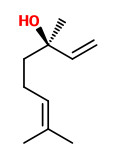 (R)-(-)-linalool (flowery) |  (E,E,Z)-2,4,6-nonatrienal (oat flake-like) | 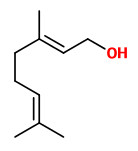 geraniol (sweet floral) | 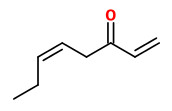 (Z)-octa-1,5-dien-3-one (green geranium) | 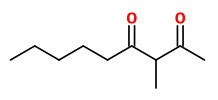 3-methyl-2,4-nonanedione (fruity hay) |
„To confirm the identification experiments obtained by this Molecular Sensory Approach, a recombinate was prepared in water consisting of the following odorants in exactly the concentrations as they occured in the tea infusion: 3-methyl-2,4-nonanedione, (E)-β-damascenone, linalool, (Z)-4-heptenal, (E,E,Z)-2,4,6-nonatrienal, (E,Z)-2,6-nonadienal as well as 2- and 3-methylbutanal. The mixture nicely matched the overall green, hay-like aroma of the green tea analyzed. A comparision of the quantitative data with those previously measured for black tea infusion (Darjeeling Gold Auslese), revealed a significant lower concentraion of all aroma compounds in the green tea beverage, except the hay-like smelling 3-methyl-2,4-nonanedione, which was quantified in both teas in the same concentration range. The result corroborates the importance of this compound for the aroma of green tea.“
[Schuh, Christian, Karola Schmid, and Peter Schieberle. „Aroma active compounds in a green tea infusion (Darjeeling)-Comparison with odorants of a black tea beverage.“ 8th Wartburg Symposium on Flavor Chemistry and Biology. 2008, 117-122]
„We investigated the effects of the odor of jasmine tea on autonomic nerve activity and mood states in a total of 24 healthy volunteers. We used the odor of jasmine tea at the lowest concentration that could be detected by each subject but that did not elicit any psychological effects. R-R intervals and the POMS test were measured before and after inhalation of the odors for 5 min. Both jasmine tea and lavender odors at perceived similar intensity caused significant decreases in heart rate and significant increases in spectral integrated values at high-frequency component in comparison with the control (P < 0.05). In the POMS tests, these odors produced calm and vigorous mood states. We also examined the effects of (R)-(-)-linalool, one of its major odor components, at the same concentration as in the tea, and (S)-(+)-linalool. Only (R)-(-)-linalool elicited a significant decrease in heart rate (P < 0.05) and an increase in high-frequency component in comparison with the controls, and produced calm and vigorous mood states. Thus, the low intensity of jasmine tea odor has sedative effects on both autonomic nerve activity and mood states, and (R)-(−)-linalool, one of its components, can mimic these effects.“
[Sedative effects of the jasmine tea odor and (R)-(-)-linalool, one of its major odor components, on autonomic nerve activity and mood states., Kuroda, K., Inoue, N., Ito, Y., Kubota, K., Sugimoto, A., Kakuda, T., Fushiki, T., European journal of applied physiology, 95(2-3), 2005, 107-114]
The high-impact chemical 3-sulfanylhexan-1-ol, with its unique scent of grapefruit and tropical fruits, is also an important trace constituent of very costly 'white teas'.
[Meaningful Scents around the World, R.Kaiser, 2006, 69]
„…total flavor intensities of Sen-cha were determined to have a close relationship to the amount of MMP [4-mercapto-4-methyl-2-pentanone], and its amounts were assumed to be dependent on the steaming conditions of the fresh tea leaves during Sen-cha production.“
[Kumazawa, Kenji, Ryoko Baba, and Osamu Nishimura. „Automated analysis of 4-mercapto-4-methyl-2-pentanone in Japanese green tea (Sen-cha) by headspace solid-phase microextraction and gas chromatography with mass spectrometric determination.“ Food science and technology research 16.1 (2010): 59-64]
The volatile flavour components of different teas (Green Assam tea, Four Season tea, Chin Shin Oolong tea, Chin Hsuan Oolong tea, Green Oolong tea) from Thailand were extracted using the simultaneous distillation and extraction (SDE) technique in low percentage yield (0.01-0.03% w/w). Important components of tea essential oils were:
Green Oolong - hotrienol, geraniol, linalool, α-terpineol, coumaran, nerol, β-ionone, and indole.
Green Assam - linalool, geraniol, α-terpineol, nerol, benzyl acetate, phytol, β-ionone, hotrienol, and (E)-nerolidol.
Chin Shin Oolong - linalool, indole, (Z)-jasmone, (E)-nerolidol, hotrienol, α-terpineol, methyl jasmonate, and acetophenone.
Chin Hsuan Oolong - (E)-nerolidol, (Z)-jasmone, geraniol, hotrienol, linalool, trans-linalyl oxide (pyranoid), and β-ionone.
Four Season - indole, geraniol, (Z)-jasmone, methyl jasmonate, α-terpineol, hotrienol, and β-ionone.
[Fingerprint of volatile flavour constituents and antioxidant activities of teas from Thailand., Pripdeevech, P., Machan, T., Food Chemistry, 125(2), 2011, 797-802]
„Monomeric flavonoids (flavan 3-ols or tea catechins) present in Camellia sinensis leaf are transformed to polymeric theaflavin and thearubigin by oxidation occurring during tea fermentation. The distinctive colour, decreased bitterness and astringency, and characteristic flavour are derived from the fermentation process giving fermented teas a marked distinction from non-fermented green tea… The changes in the volatile profile at various fermentation levels results in some compounds increasing in concentration while others decreased. Of the 24 compounds analysed, only four were most abundant in the 0% fermented tea which decreased with increasing fermentation level. These four compounds were dimethyl sulphide, 1-penten-3-ol, toluene and ethylbenzene. Conversely, twelve compounds [2-methyl propanal, 2-butanone, 2-methyl butanal, 3-methyl butanal, pentanol, 2-ethyl furan, heptanal, 6-methyl 5-hepten-2-one, 2-pentyl furan, 2,2,6-trimethyl cyclohexanone, linalool, one unknown] increased in amount as the fermentation level increased.“
[Changes in antioxidant phytochemicals and volatile composition of Camellia sinensis by oxidation during tea fermentation., Kim, Y., Goodner, K.L., Park, J.D., Choi, J., Talcott, S.T., Food Chemistry, Vol.129(4), 2011, 1331-1342]
„The sensory quality ranking of Japanese green tea (Sen-cha) was evaluated and predicted using volatile profiling and multivariate data analyses… The major volatile compounds identified from chromatographic profiles obtained both non-polar and polar columns were coumarin, dihydroactinidiolide, linalool oxides, geraniol, trans-geranylacetone, indole, 6-chloroindole, β-ionone, 5,6-epoxy-β-ionone, cis-jasmone, linalool, methyl jasmonate, trans-nerolidol, 1-octanol, 2-pentanol, phenylethyl alcohol, and phytol… By examining the loadings of PLS–DA, the significant variables contributing to the classification of the high and low quality green tea sample were revealed. They implied that the higher quality green tea samples contained a relatively higher concentration of phytol, caffeine, cis-jasmone, linalool oxide (trans-pyranoid), 6-chloroindole, trans-geranylacetone, methyl jasmonate, and some unknown compounds, compared to the lower quality ones. Whereas, geraniol, linalool, dihydroactinidiolide, linalool oxides (cis- and trans-furanoid), and coumarin were found in the lower concentration in the higher grade green tea samples.“
[Predication of Japanese green tea (Sen-cha) ranking by volatile profiling using gas chromatography mass spectrometry and multivariate analysis., Jumtee, K., Komura, H., Bamba, T., Fukusaki, E., Journal of bioscience and bioengineering, 112(3), 2011, 252-255]
http://www.thaiscience.info/Article%20for%20ThaiScience/Article/2/Ts-2%20predication%20of%20japanese%20green%20tea%20ranking%20by%20volatile%20profiling%20using%20gas%20chromatography%20mass%20spectrometry%20and%20multivariate%20analysis.pdf
Concentrations and odor activity values of the 16 most potent odorants in black tea infusion were: linalool (142µg/l, OAV 237), geraniol (142µg/l, OAV 45), (E,E,Z)-2,4,6-nonatrienal (1.1µg/l, OAV 41), β-damascenone (0.15µg/l, OAV 38), methylpropanal (69µg/l, OAV 37), 3-methylbutanal (42µg/l, OAV 37), 2-methylbutanal (82µg/l, OAV 37), 3-methyl-2,4-nonandione (0.48µg/l, OAV 37), (E,Z)-2,6-nonadienal (0.56µg/l, OAV 22), (E,E)-2,4-decadienal (2.9µg/l, OAV 18), (Z)-3-hexenol (95µg/l, OAV 7), (Z)-4-heptenal (0.66µg/l, OAV 11), phenylacetaldehyde (57µg/l, OAV 9), β-ionone (1.5µg/l, OAV 7), hexanal (55µg/l, OAV 5), and (E,Z)-2,4-nonadienal (0.45µg/l, OAV 3).
[Schieberle, Peter, and Thomas Hofmann. „Mapping the combinatorial code of food flavors by means of molecular sensory science approach.“ Food Flavors: Chemical, Sensory and Technological Properties. CRC Press, 2011, 413-438]
„Volatile compounds from Pu-erh tea were extracted using a headspace-solid phase microextraction (HS-SPME), and analysed with a gas chromatography-mass spectrometry (GC-MS) and a gas chromatography olfactometry (GC-O). Results showed that a total of 66 major volatile compounds were identified by GC-MS analysis; among them, methoxy-phenolic compounds (33.58%), alcohols (23.01%) and hydrocarbons (11.62%) were the major chemical classes. It was found that 1,2,3-trimethoxybenzene (17.16%) was the most abundant aroma component, followed by α-terpineol (5.68%), 1,2-dimethoxybenzene (4.64%) and linalool oxide II (4.29%) in order. Twenty-nine odour active compounds were perceived by GC-O analysis. Further investigation showed that 1,2-dimethoxybenzene, 1,2,3-trimethoxybenzene, 1,2,3-trimethoxy-5-methylbenzene, 4-ethyl-1,2-dimethoxy-benzene, β-ionone, β-linalool, linalool oxides, decanal, etc. were responsible for the special flavour in Pu-erh tea. It seems that the methoxy-phenolic compounds and alcohols play a vital role in the special flavour of Pu-erh tea.“
[Aroma characterisation of Pu-erh tea using headspace-solid phase microextraction combined with GC/MS and GC–olfactometry., Lv, H.P., Zhong, Q.S., Lin, Z., Wang, L., Tan, J.F., Guo, L., Food Chemistry, Vol.130(4), 2012, 1074-1081]
As jasminoid troika, Z-jasmone, methyl jasmonate, and δ-jasmolactone constitute the organoleptic principle of Ceylon (Sri Lankan) tea.
[Scent and Chemistry, Günther Ohloff, Wilhelm Pickenhagen, Philip Kraft, Wiley-VCH, 2012, 263]
„The polyphenols, a large group of plant chemicals that includes the catechins, are thought to be responsible for the health benefits that have traditionally been attributed to tea, especially green tea. Major catechins are (-)-epicatechin gallate (ECG), (-)-epicatechin (EC), (-)-epigallocatechin (EGC) and (-)-epigallocatechin gallate (EGCG). The most active and abundant catechin in green tea is epigallocatechin-3-gallate (EGCG). Black tea contains much lower concentrations of these catechins than green tea. Oolong tea contains a mixture of simple polyphenols, such as catechins and complex polyphenols.“
[Camellia Sinensis (green tea): a review., Namita, P., Mukesh, R., Vijay, K.J., Global J Pharmacology, Vol.6, 2012, 52-59]
http://www.idosi.org/gjp/6%282%2912/1.pdf
In a sensory analysis of four black tea grades, α-ionone, ethyl caprylate, 3-hydroxy-β-damascone, β-ionone, 2(4H)-benzofuranone (dihydroactinidiolide), nonanal, and β-farnesene were positively correlated with sensory attributes (aroma quality) of black tea.
[Hoang, Q.T., et al. „Sensory aroma and related volatile flavor compound profiles of different black tea grades (camellia sinensis) produced in northern Vietnam.“ in: Fom senses to quality: What can sensory evaluation bring to quality control (2014): 113-119]
„The volatile fractions of three famous Chinese green tea cultivar infusions (Longjing, Maofeng, and Biluochun) were prepared by a combination of the adsorptive column method and the SAFE techniques. The aroma extract dilution analysis (AEDA) applied to the volatile fractions revealed 58 odor-active peaks with flavor dilution (FD) factors between 41 and 47. Forty-six of the odorants, which included six odorants that have not been reported in the literature in Chinese green tea (2-isopropyl-3-methoxypyrazine, 2-ethenyl-3,5-dimethylpyrazine, cis-4,5-epoxy-(E)-2-decenal, 4-ethylguaiacol, (E)-isoeugenol, and 3-phenylpropionic acid), were identified or tentatively identified by GC-MS and GC-O. Among the perceived odorants, 4-hydroxy-2,5-dimethyl-3(2H)-furanone, 3-hydroxy-4,5-dimethyl-2(5H)-furanone, coumarin, vanillin, geraniol, (E)-isoeugenol, and 2-methoxyphenol showed high FD factors in all of the cultivars, irrespective of the cultivar or harvesting season, suggesting that these seven odorants are essential for the aroma of Chinese green tea.“
[Baba, Ryoko, and Kenji Kumazawa. „Characterization of the potent odorants contributing to the characteristic aroma of Chinese green tea infusions by aroma extract dilution analysis.“ Journal of Agricultural and Food Chemistry 62.33 (2014): 8308-8313]
„Black tea volatiles are mainly dependent on the oxidation of tea flavonols during fermentation. Virtually, most alcohols, aliphatic acids, phenols, and carbonyls occur in this stage. The degree of partial fermentation determines the constitution and concentration of major aromas in oolong tea, such as jasmine lactones, nerolidol, and methyl jasmonate. Non-fermented green tea contains abundant tea catechins that give it its unique greenish aroma.“
[Tea aroma formation., Ho, C.T., Zheng, X., Li, S., Food Science and Human Wellness, 4(1), 2015, 9-27] http://www.sciencedirect.com/science/article/pii/S221345301500018X
„3-Methyl-2,4-nonanedione has been associated with a prune note in oxidized wine and is an aroma determinant in tea and apricots. Further screening against the entire set of 391 human odorant receptors revealed that 30 or 300 μmol/L 3-methyl-2,4-nonanedione activated only 1 receptor, OR1A1, suggesting a unique role of OR1A1 for the most sensitive detection of this key food odorant in wine, tea, and other food matrices.“
[Geithe, C., Noe, F., Kreissl, J., & Krautwurst, D. (2016). The broadly tuned odorant receptor OR1A1 is highly selective for 3-methyl-2, 4-nonanedione, a key food odorant in aged wines, tea, and other foods. Chemical Senses, bjw117.]
„The orchid-like odor of a tea infusion is regarded as a noble aroma and an essential sensory attribute for certain premium teas. Such tea leaves are difficult to make and the quality is not always reproducible. This study is focused on the molecular sensory basis of the orchid-like attribute in tea brews. The aroma is defined as jasmine- and magnolia-like floral notes with a fruity undertone and found to be closely related to the flower scent of the orchid Cymbidium faberi Rolfe (hui lan) by a sensory panel. Gas chromatography mass spectrometry (GC-MS) and aroma extract dilution analysis revealed that the key contributor was (Z)-methyl epijasmonate (epi-MeJA), which was also one of the main odor compounds in the flower scent of C. faberi and in the infusions of selected high-quality teas. Concentration of epi-MeJA was ranging from 0.09 to 2.2 µg/g in the oolong and green tea leaves.“
[MLA
Feng, Zhihui, et al. „Characterization of the orchid-like aroma contributors in selected premium tea leaves.“ Food Research International 129 (2020): 108841]
„Sensory-guided analysis of the volatile fraction isolated from a freshly prepared green tea beverage (Camellia sinensis; type Jingshan cha) revealed 58 odor-active compounds after application of an aroma extract dilution analysis. Among them, 3-methylnonane-2,4-dione, (Z)-1,5-octadien-3-one, 3-(methylthio)propanal, trans-4,5-epoxy-(E)-2-decenal, methanethiol, dimethyl sulfide, and indole appeared with the highest flavor dilution factors. A quantitation of 42 aroma compounds by means of stable isotope dilution assays followed by the calculation of odor activity values (OAV; ratio of concentration to odor detection threshold) showed 27 key aroma compounds with OAVs ≥ 1. By far, the highest OAV of 458 was calculated for the asparagus-like/putrid smelling dimethyl sulfide followed by (E,E)-2,4-heptadienal.“
[Flaig, Mario, et al. „Characterization of the key odorants in a high-grade Chinese green tea beverage (Camellia sinensis; Jingshan cha) by means of the sensomics approach and elucidation of odorant changes in tea leaves caused by the tea manufacturing process.“ Journal of agricultural and food chemistry 68.18 (2020): 5168-5179]
„There were 32 VOCs that contribute to the aroma of green tea, 12 of which contributed to the aroma characteristics of green… Among the above 12 components, 3 were positively correlated with the green score of aroma profile, they were geraniol, cis-3-hexen-1-ol and (E)-2-hexen-1-ol, respectively… cis-3-hexen-1-ol played the leading role in green aroma of green tea.“
[Nie, Cong-ning, et al. „Characterization of the effect of cis-3-hexen-1-ol on green tea aroma.“ Scientific reports 10.1 (2020): 1-15]
Roller-hot air fixation has been found as the optimal method for generating an intense and long-lasting chestnut-like aroma and floral taste of of green tea with a chestnut-like aroma. Theaspirane, linalool, cedrol, 3-methyl-butanal, trans-β-ionone, and τ-cadinol emerged as key differential volatile compounds between green teas with and without a chestnut-like aroma.
[Wang, Huajie, et al. „Influence of fixation methods on the chestnut-like aroma of green tea and dynamics of key aroma substances.“ Food Research International 136 (2020): 109479]
Omission tests showed that (E)-β-damascenone, β-ionone, dihydro-β-ionone, linalool, and geraniol were the key odor-active compounds for the aroma profile of sun-dried black tea. Phenylethyl alcohol, (E)-2-decenal, hexanal, and methyl salicylate were also important to the aroma profile.
[Liu, Cong, et al. „Characterization of key odor-active compounds in Sun-Dried black tea by sensory and instrumental-directed flavor analysis.“ Foods 11.12 (2022): 1740] https://www.mdpi.com/2304-8158/11/12/1740/pdf
„…reduction and addition experiments revealed phenylacetaldehyde, (E,E)-2,4-heptadienal, geraniol, linalool, β-damascenone, 2-methylbutyraldehyde, dimethyl sulfide, and isovaleraldehyde with odor activity values (OAV) > 100 as the characteristic aroma components of F4H [fully fermented black tea] and also as the main contributors to aroma differences between different fermentation degrees.“
[Zhou, Jingtao, et al. „Characterizing and Decoding the Effects of Different Fermentation Levels on Key Aroma Substances of Congou Black Tea by Sensomics.“ Journal of Agricultural and Food Chemistry 71.40 (2023): 14706-14719]
„Omission test identified eight substances, including dimethyl sulfide, (E)-β-ionone, cis-jasmone, linalool, nonanal, heptanal, isovaleraldehyde and (Z)-3-hexenol, as the key aroma active compounds of steamed green tea. With the increase of withering degree, the content of these substances increased first and then decreased except for heptanal and cis-jasmone.“
[Qin, Muxue, et al. „The key aroma components of steamed green tea decoded by sensomics and their changes under different withering degree.“ Food Chemistry 439 (2024): 138176.]
„Volatile flavour components of tea flowers (Camellia sinensis) were isolated by two methods viz. simultaneous distillation extraction (SDE), supercritical fluid extraction (SFE), analyzed by GC and GC/MS and compared with headspace analysis (HS). The composition of the volatile components extracted by the three methods differed considerably. In SFE, phenylethanol (14.7%), linalool (7.9%), (E)-linalool oxide furanoid (3.5%), epoxy linalool (1.6%), geraniol (2.3%) and hotrienol (1.5%) were major components. m-Xylene (2.6%), (E)-linalool oxide pyranoid (5.4%), p-myrcene (5.2%), alpha-cadinol (4.3%) and methyl palmitate (2.9%) were major compounds isolated by SDE. 3-hexenol (2.1%) (E)-4,8-dimethyl-1,3,7-nonatriene (20.9%) and linalool (35.1%) are major components in headspace analysis. Acetophenone and pheromone germacrene D is detected in tea flowers by all the methods studied. Floral, fresh and fruity odour of tea flowers is retained by SFE as there is very little loss of heat sensitive volatiles in SFE. The flavour isolated from SFE has superior quality compared to SDE.“
[Characterization of volatile components of tea flowers (Camellia sinensis) growing in Kangra by GC/MS., Joshi, R., Saini, R., Guleria, S., Babu, G. D., Kumari, M., Gulati, A., Natural product communications, Vol.6(8), 2011, 1155-1158]
Geosmin occurs in the flower scents of Camellia sasanqua (2%) and Camellia sinensis (0.01%).
[R.Kaiser, Scent of the Vanishing Flora, Zurich 2011, 93]
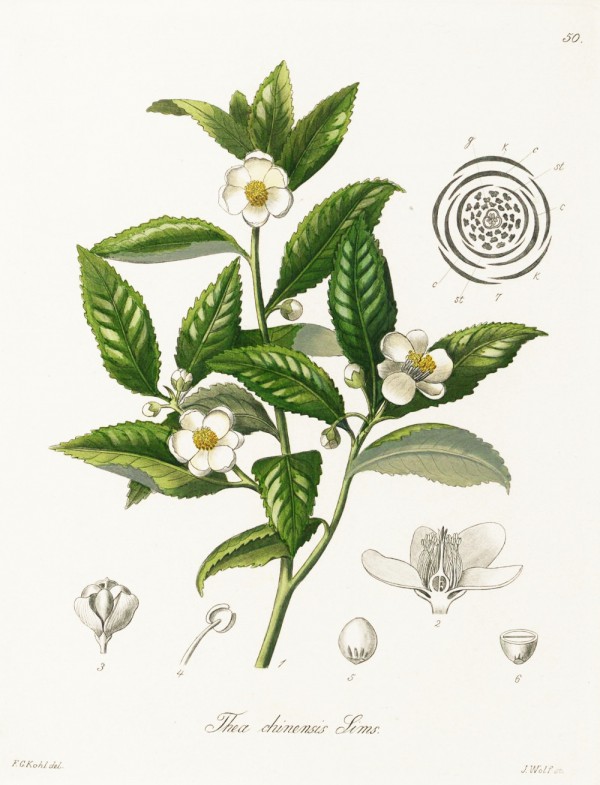
Kohl,F.G., Die officinellen Pflanzen der Pharmacopoea Germanica, t.50 (1891-1895)
http://plantgenera.org/species.php?id_species=185045
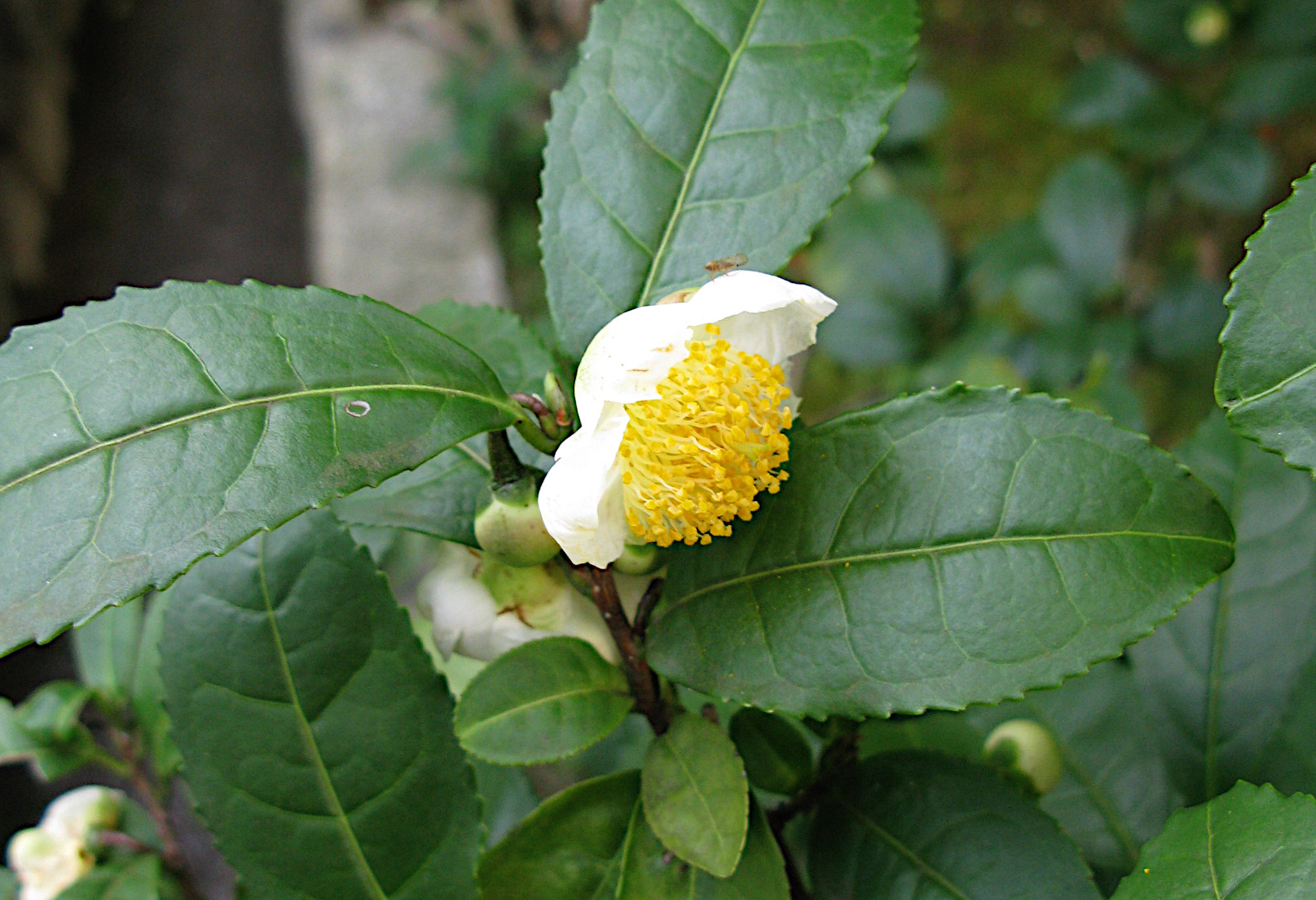
Camellia sinensis, Kyoto, Japan (PD, CC0)
wikimedia commons

